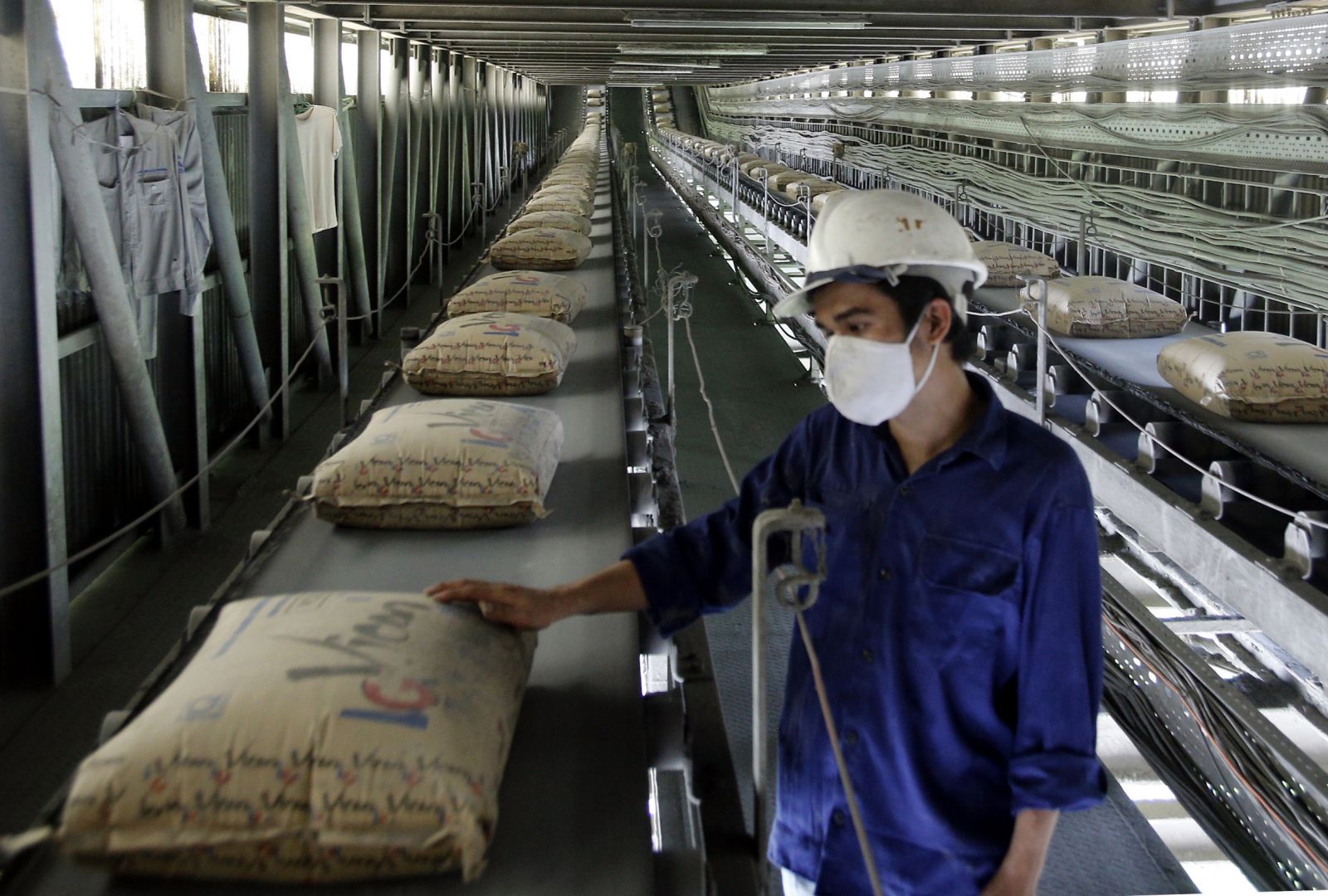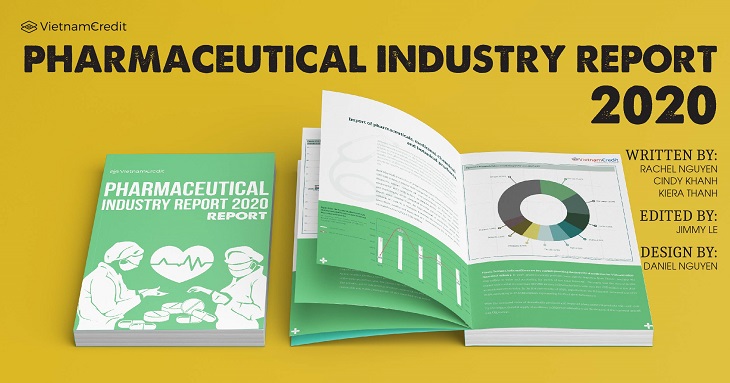Tea industry is an important sector that has been contributing to the socio-economic development of Vietnam. The industry has created a myriad of jobs for local people, alleviated poverty as well as provided stable incomes for millions of growers across the country.
Introduction to Vietnam’s Tea Industry
The value chain of the Vietnam’s tea industry is operated with the cooperation of three main activities: producing raw fresh tea, processing tea and trading tea products. Some of the important factors participate in the tea value chain that affect the development of the tea industry are tea growers, traders or collectors, processors, distributors and exporters.
Data from the Vietnam Tea Association in 2006 showed that there are around 400,000 tea growers and more than 600 industrial-scale tea processing enterprises operating in the industry. The labor force working the segment of tea production, processing, trading to service is up to 2 million people. In the trading sector only, according to the Ministry of Agriculture and Rural Development (MARD), there are currently 370 organizations, enterprises and individuals operating in tea export activities.
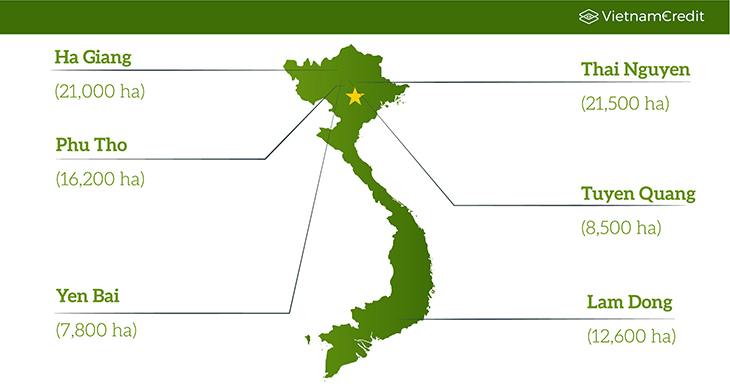
Tea products in Vietnam’s market can be classified by processing methods into several major types including black tea, green tea, oolong tea, scented tea and new tea products. By 2020, Vietnam has 34 tea growing province nationwide, in which a number of areas are identifying tea as the main industrial crop. Some large tea growing provinces in Vietnam are Thai Nguyen (21,500 ha), Ha Giang (21,000 ha), Phu Tho (16,200 ha), Lam Dong (12,600 ha), Tuyen Quang (8,500 ha) and Yen Bai (7,800 ha). Besides, there are several Vietnam's notable tea growing areas such as Tuyen Quang, Yen Bai, Son La, Bac Kan, Nghe An, and Ha Tinh.
Tea Growing
In recent years, the tea industry has made great strides in tea growing, processing and trading.
The total area for tea production in the past 5 years has been remained at around 130,000 ha. According to the Food and Agriculture Organization of the United Nations (FAO), Vietnam's tea growing area ranked 5th in the world in 2018, after China, India, Kenya and Sri Lanka. According to the plan to develop the agriculture sector to 2020, with a vision to 2030, approved by the MARD, the tea growing area is expected to remain stable at 140,000 ha from 2020 onwards.
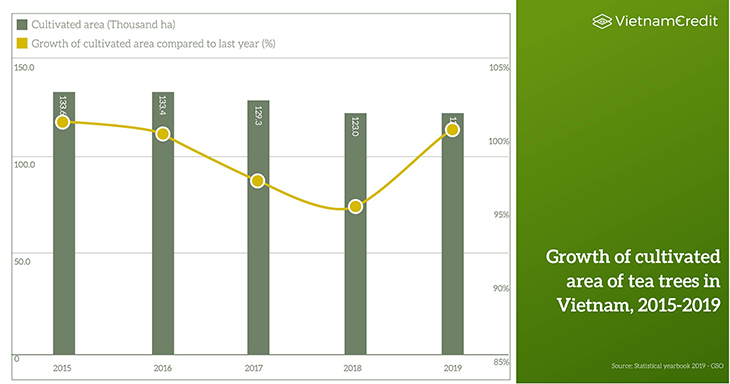
In 2018, Vietnam ranked in the top 6 largest tea growing countries in the world. After contracting by 6% in volume in 2017, fresh tea bud production in Vietnam has gradually increased since 2018, achieving more than 1 million tons in 2019. In the first 6 months of 2020, the amount of produced fresh tea bud reached 475 thousand tons, growing by 2.4% over the same period last year.
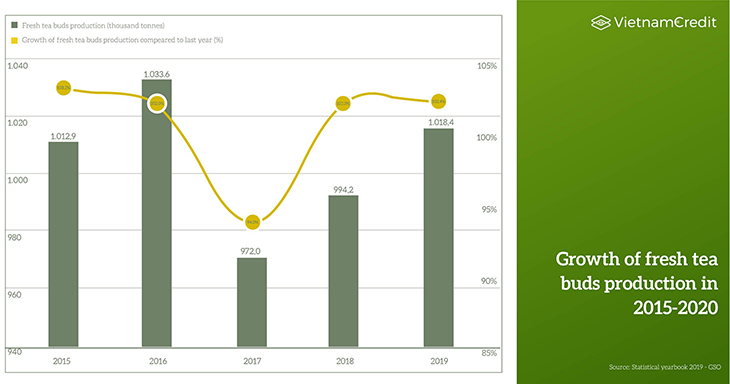
Tea Exports
Data from the General Department of Customs showed that in 2018, the amount of tea export reached more than 127 thousand tons, dropping sharply by 8.7% compared to 2017 despites its increasing trend since 2015. The tea export turnover was at nearly 218 million USD, down 4.4% against the last year. Tea export increase again in 2019, reaching nearly 137.4 thousand tons, an increase of 8% compared to 2018. Accordingly, tea export value was estimated at 236 million USD, growing by 8.8%. In which, the proportion of black tea and green tea accounted for 39.7% and 39.6% respectively.
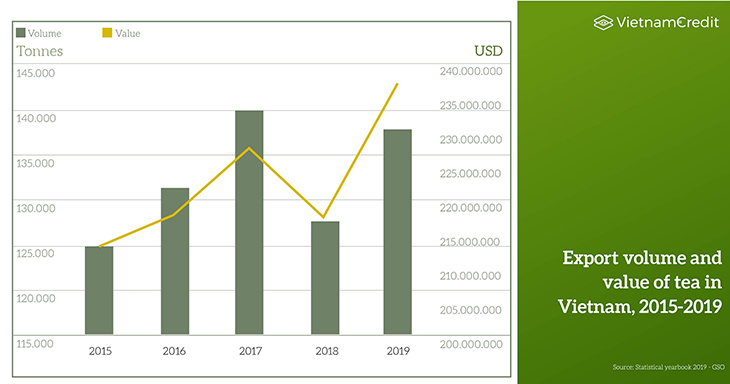
Pakistan, Taiwan, Russia, Indonesia and China are the five largest markets in terms of export volume in Vietnam. In 2019, the total output of these major markets accounts for more than 74% of the tea export turnover, with a value up to 172 million USD.
Challenges for Vietnam’s Tea Industry
Besides the achievements, the tea industry has been facing many difficulties. Links among actors in the value chain of the tea industry in Vietnam are weak, especially between enterprises and farmers. There are many levels of middlemen collectors involving in the value chain which reduces the quality of tea during the gathering and delivering process. Besides, tea growers in numerous localities are willing to break contracts with companies, sell tea to traders or middlemen collectors who offer higher prices, leading to a shortage of raw materials for processing and exporting enterprises.
Despite being a country with a large tea export volume in the world, the competitiveness of tea products in terms of quality, designs and brands in the international market remains low. Therefore, the average export tea price is not high compared to other competitors in the industry.
Opportunities and Development Prospects for the industry
After the EVFTA Agreement comes into effect, tea import tax to EU countries will be fully exempted, which is a huge opportunity to expand markets for Vietnamese tea exporters. Therefore, Vietnam needs to strengthen the chain of links between tea production and consumption, improve the quality of tea products, and promote the national brand of Vietnamese tea in the international market to take advantage of this agreement.
It is forecasted that the tea market will continue to grow in the long term, especially in the Chinese market. Tea prices will tend to increase in the short term due to a shortage of supply resulting from the disruption in many tea-producing countries worldwide. This is the suitable time for Vietnam's tea industry to boost exports and increase market share in the global market.
TEA INDUSTRY REPORT 2020
VietnamCredit







